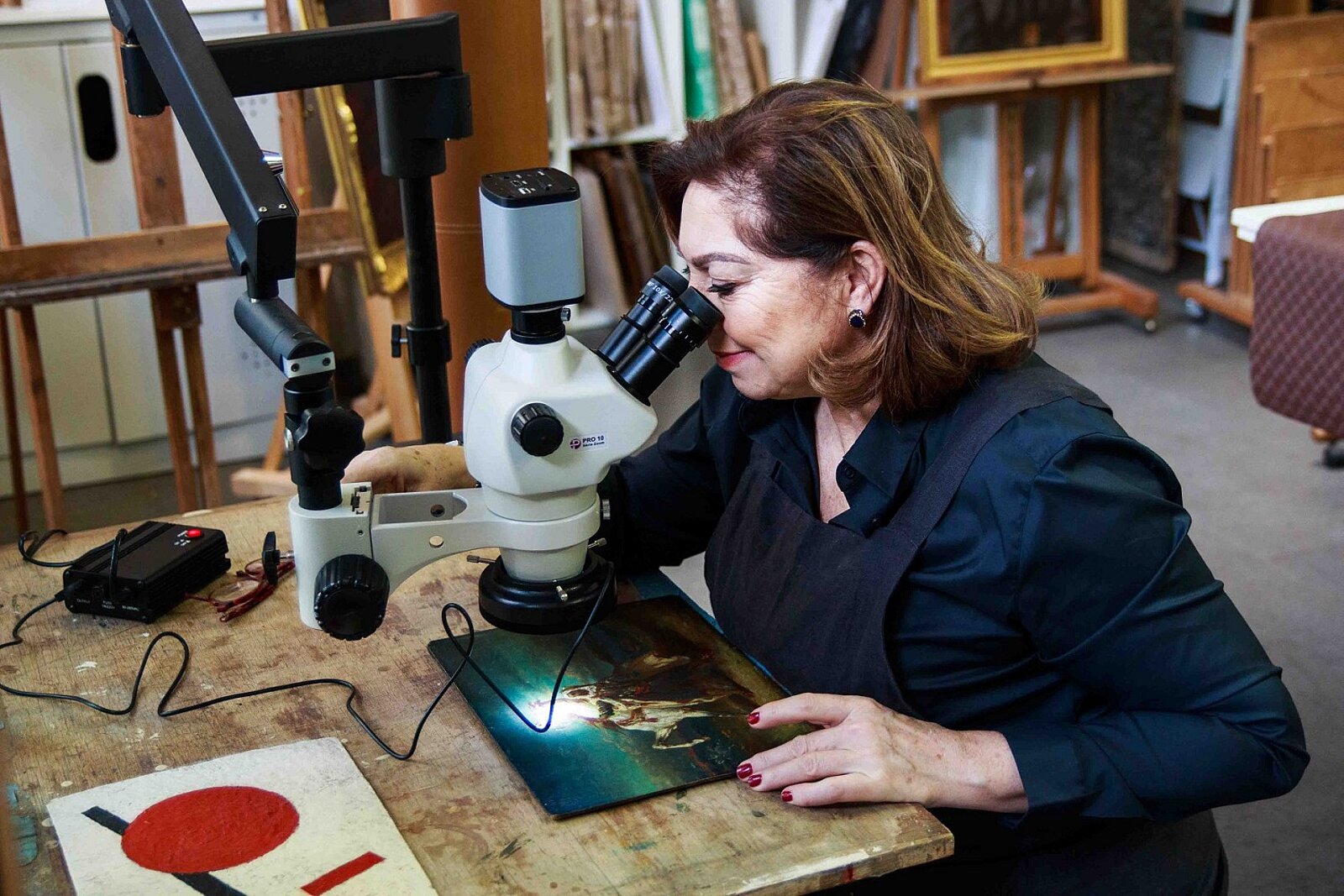Art restorer, a profession for experts, scholars and the curious
Février 2023 3 avenue Daumesnil

Restorers and restoration of works of art, imprecise terms to define a renowned profession that is still poorly known because the discipline remains discreet and protects its know-how.
The restorer; a discreet "doctor" of paintings ...
The restoration of works of art requires the expert to be both curious and knowledgeable. Any work of art can be restored, whether it is ancient or contemporary. The profession is based on respect for the work and the artist's hand.
Rigour and self-demand are inseparable from a profession that calls on the faculties of prevention, maintenance, expertise and collaboration with artists, collectors and researchers. And this, in order to identify the appropriate solution that will restore the beauty of the work altered by time or accidents. This goes hand in hand with a strict code of ethics, based on discretion and even absolute professional secrecy.
The study of historical recipes, studio diaries, artists' letters, or any other element likely to help understand the artist's work is a source of information. The conservator then seeks to reproduce the original techniques. The samples thus recreated are used to study the processes of evolution and alteration. This makes it possible to test new treatments.
An incredible varietý of craft and scientific disciplines
If the discipline of restoration fascinates so much, the reason must be found both in the discretion inherent in its practice and in the infinite diversitý of products, materials, materials and techniques used today. The only thing that counts is the objective of restoration at the outset for the restorer, a true expert in the diseases of Art.
A work of art can pose particularly complex questions in terms of the technique used, the alteration and stabilisation of the materials used. It is then the subject of targeted research. It is examined by means of various optical procedures (X-ray or UV rays), which go as far as microscopic analysis, by taking a sample.
At "L'Atelier du Temps Passé" at the Viaduc des Arts, Annette Douay explains, "L'Atelier uses a very rare hyperspectral imaging tool, (...). The work is scanned point to point to allow software to identify the material, thus authenticating and dating the works of art in a non-invasive way. "Low-pressure heating tables prevent lining," adds Annette.
All these techniques allow investigations and the resolution of many problems with works of art, including contemporary ones, which are quickly weakened by pollution in particular.
A true surgeon of contemporary art
Restoring works of contemporary art is sometimes a challenge and requires ingenuity and unfailing technical mastery.
For example, Jean-Paul Ledeur, the best-known contemporary art restorer in France, devised a technique to restore a Vasarely painting: "a real headache! Imagine a painting composed of not one but 400 tiny monochromes! Vasarely refused to allow the damaged square to be repainted; the second layer of material would risk giving it a thickness that would distinguish it from the others. I contacted a plastic surgeon to reproduce micro-sandblasting, a cleaning process that consists of projecting a very fine powder onto the surface to be treated.
Contemporary art must find remedies for its fragilitý for it must face the passing of time and the instabilitý of the materials that are its own: acrylic textures, vinyls, industrial paint. To which we can add the use of Bic, plaster, sand, resin, which are unstable materials that evolve in an unpredictable way.
The restorer then becomes a researcher, a modern-day adventurer, seeking to unravel the mystery of the material for the sake of art and the pleasure of our eyes.
Viaduc des arts (1-129 avenue Daumesnil, 75012 Paris)
Paris celebrates 100 years of artisanal excellence! July 202515, 73 et 111 avenue Daumesnil, 75012 Paris
Maison Tassin has moved into the Viaduc des arts May 2025111 avenue Daumesnil, Paris 12
A day in time, where the art of costume meets photography February 202569 avenue Daumesnil, Paris 12
The Viaduc des arts is celebrating this December: discover the program December 20241-129 avenue Daumesnil, Paris 12
Cécile et Jeanne, jewellery creation since 1990 November 202449 avenue Daumesnil, Paris 12
At La Fabrique nomade, refugee artisans reconnect with their craft November 20241bis avenue Daumesnil, Paris 12
Estampille 52, high-end cabinetry November 202491 avenue Daumesnil, Paris 12
Serge Amoruso, high-end leather goods at heart October 202437 avenue Daumesnil, Paris 12


